Freshly baked, homemade and no sugar, no egg and no dairy ingredients added. It’s a very basic easy Sugar Free and Vegan White Loaf Oats Bread, with a little bit of oats and nuts on top. It cannot get any better than homemade.
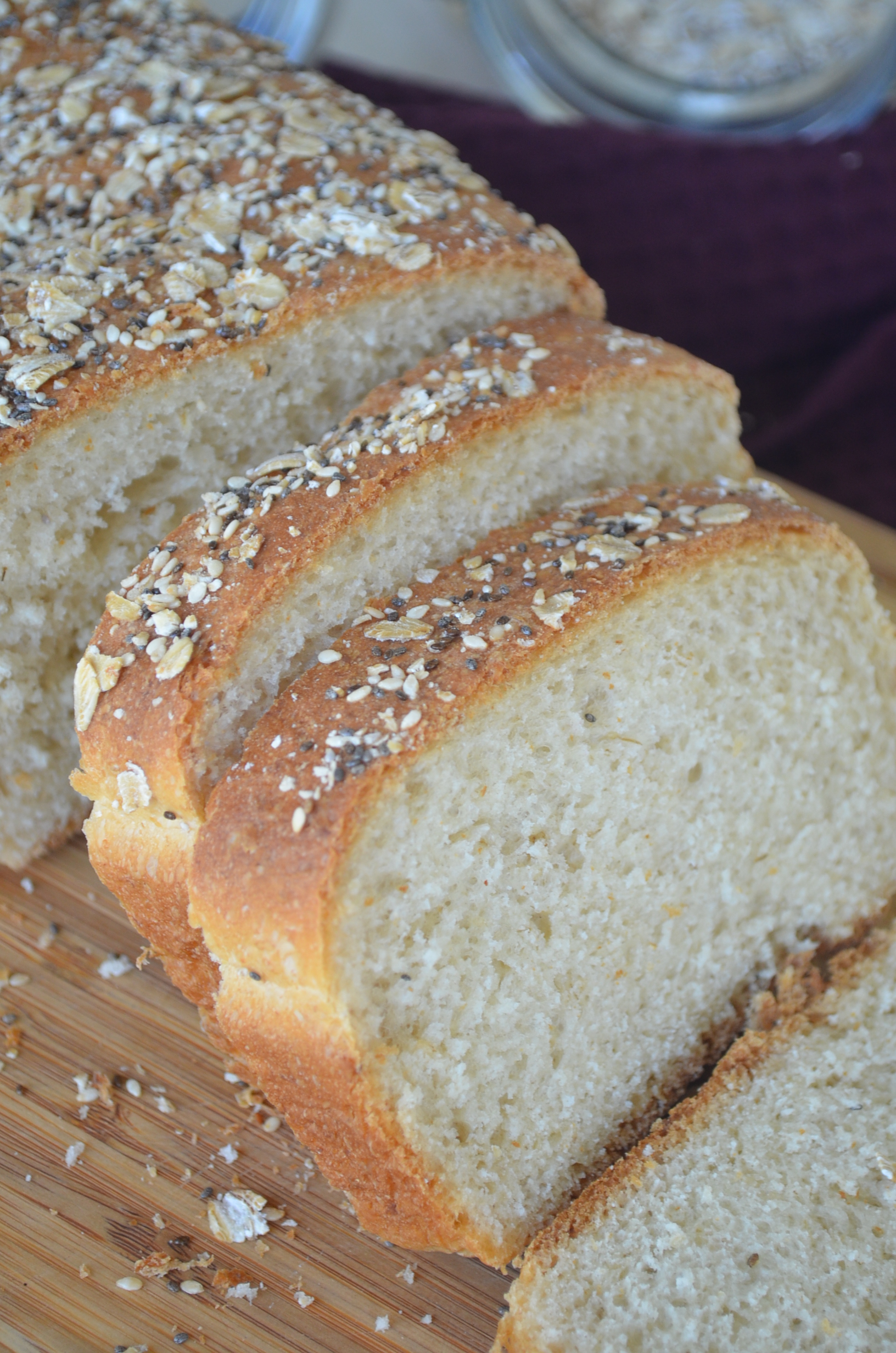
I had been making my bread at home most of the time now. I used to think it was a difficult to make a homemade bread but as soon as I get the hang of it, I rarely buy bread from the grocery. If there is one recipe in my website that I used the most, it is my All-Around Bread Dough recipe. It was so easy and versatile that I never though of buying bread again. I used it for almost anything sweet and savory bread that I make, sometimes I may need to tweak it a bit to customize the use, but it was a good base recipe for variations of sweet and savory bread. However, that recipe uses egg and milk, and so when I ran out of egg and milk over the weekend and I wanted to make a sandwich bread, that is when I decided to make this Vegan Sandwich Bread, and while I am on it I thought why not make it sugar free as well. So this recipe was born, my very own Homemade Sugar Free and Vegan Sandwich Loaf Bread.
Featured Video: All-Around Sweet and Savory Bread Dough
No need for milk, water is all you need
This is where it becomes super basic, all you need is water to bring the dough together. No milk , no egg, just water. It is how basic it is. The small amount of oil and honey is to keep the dough not too dry and dense and to give a little sweetness, but it is water that will really bring the mixture together to form a dough.
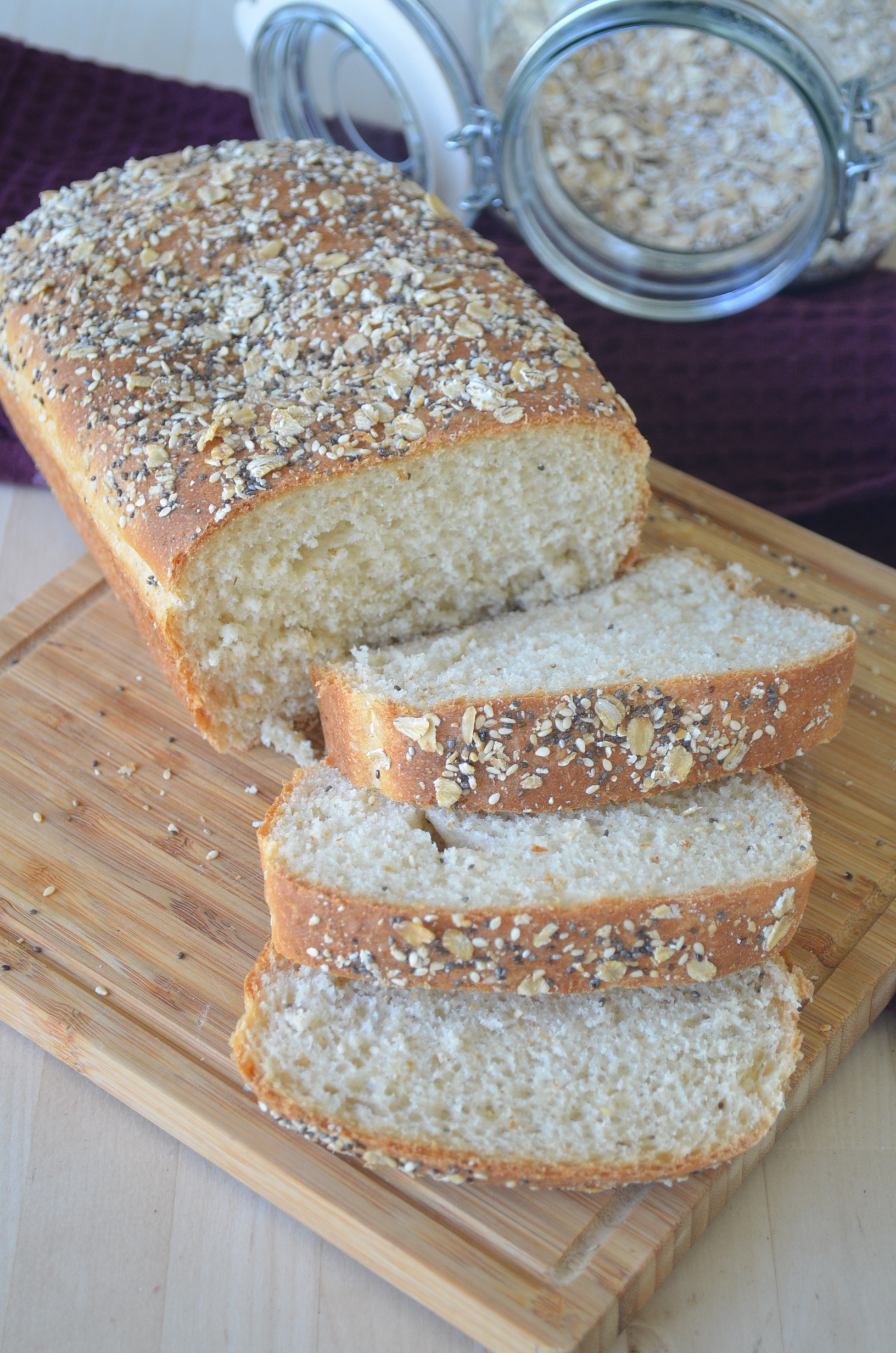
No sugar, instead honey
To make it sugar free, I used honey to give the bread a slight sweetness, but not too much. Also the honey adds moisture to the bread preventing it to be too dry.
Substituting Honey
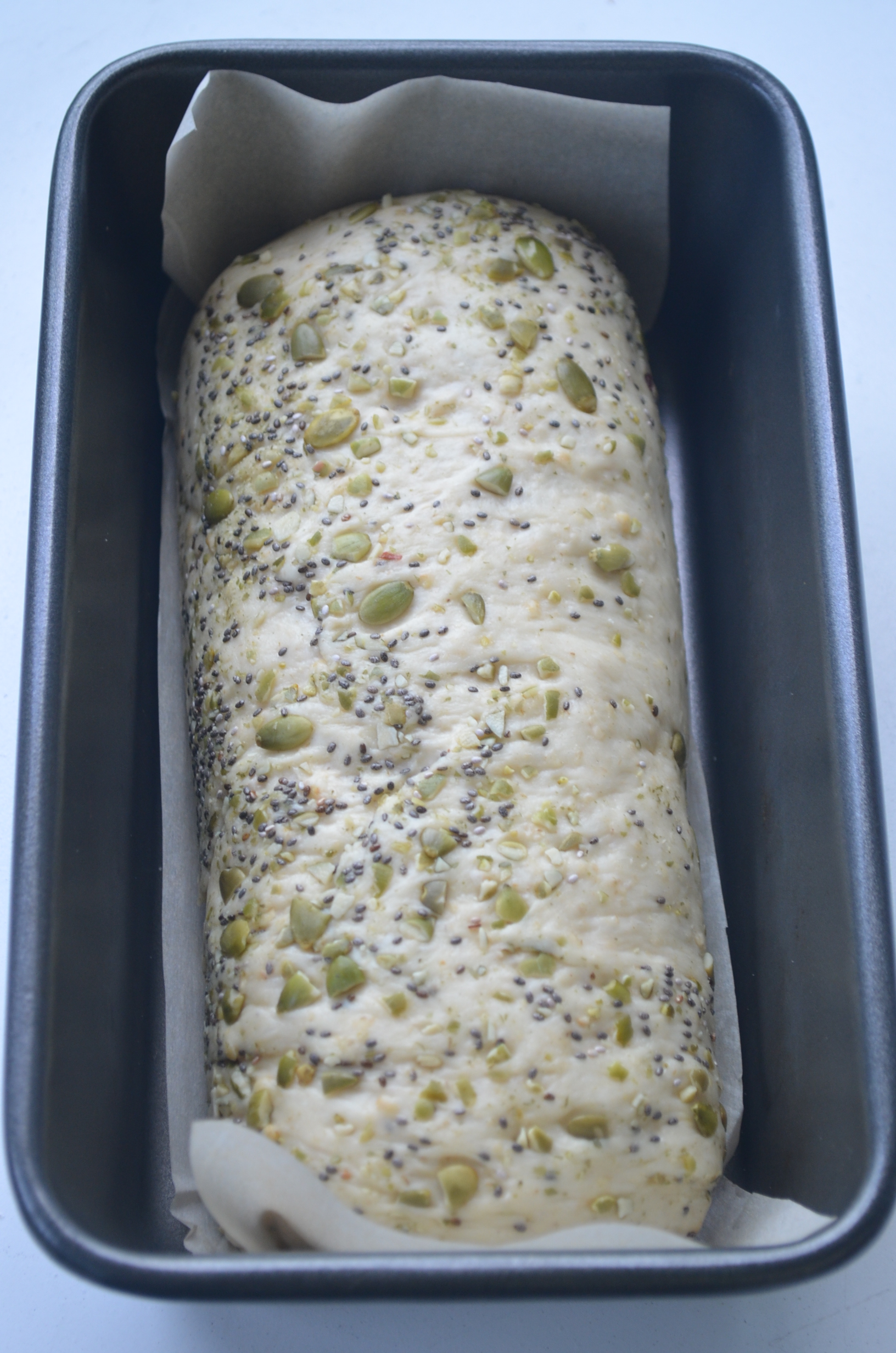
I guess I have to mention this. Substituting honey for something like Maple Syrup or granulated white sugar will need minor adjustment in the recipe. Maple Syrup is thinner than honey which may require you to add a little bit more flour, either that or use lesser maple syrup (say 3 tbsp) and adjust as needed. If the dough is too sticky, add 1 tbsp of flour at a time until you get to the soft, elastic and slightly sticky texture. On the other hand, if you use granulated sugar in place of honey, you are basically reducing the liquid in the recipe which means you may need to add more water to avoid the dough from getting to dense and dry, or probably reduce the amount of flour and start with 1 1/2 cups first and gradually add the remaining 1/4 cup as needed. I haven’t tried both, but this is how I would probably adjust it If I decided to replace honey with Maple syrup of granulated sugar.
Why do wee need to add the oats with the yeast while proofing?
Normally, oats goes with the dry ingredients like flour. But in this recipe, although the rolled oats is just a small portion, we are adding it directly to the water while proofing the yeast. This is to give the rolled oats time to soften as it soak the water. Rolled oat is dry and tends to absorb more liquid, having it soaked to soften will lessen the chance of making the bread dry.
Texture of the bread
This bread has a nice soft texture, with somewhat coarse surface. It is not as dense and chewy, but has a perfect texture for sandwich bread. Since the bread do not use any dairy, it doesn’t have that creaminess, but it does taste good for a Vegan bread. This bread can be use as how you would have used a regular sandwich bread. Great for Avocado toast or even for grilled cheese.
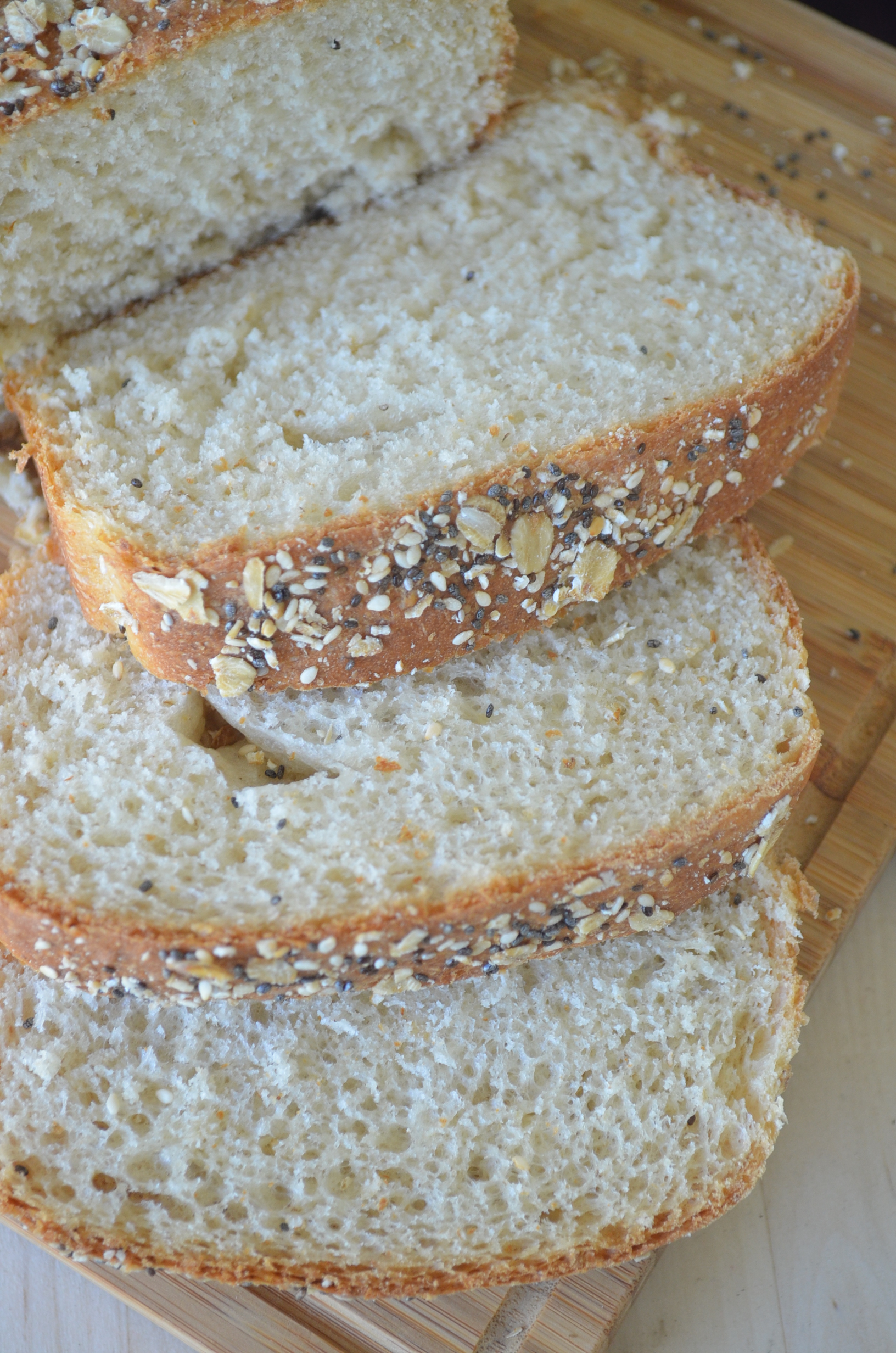
Active Yeast vs. Instant Yeast
Because yeast plays a very important role is making this soft and fluffy bread, let’s take few minutes to understand it. What it is, what are the common types of yeast, the difference among the yeast, and what role the yeast do in bread. I normally encounter 2 types of yeast in most recipes, and in the grocery so I decided to focus on this two types of yeast, although there is a 3rd type “Fresh Yeast” but I never used it.
Types of Yeast
- Active Dry Yeast – This and the Instant Yeast are what I used in most of my bread. In terms of appearance and texture, this kind of yeast are coarser and have bigger granules. It requires to be dissolved in warm water with sugar to activate it. It normally takes 5-10 minutes to do this, and you will now that it’s been “awaken” when bubbles starts to form in the surface of the water, and you would be able to smell it too. This last longer in terms of shelf life and should be kept in a cool dry place. I kept mine in the refrigerator.
- Fast Acting or Instant Yeast – In terms of appearance, this kind of yeast have a finer granules as compared to active dry yeast. This does not require to be dissolved in warm water and sugar. This can be mixed directly with the dry ingredients such as flour, just make sure to keep it away from salt when you mix it as salt can kill the yeast when they touch directly with each other. I normally mix the flour, salt and leavener then I add the instant yeast last. This should als be kept in cool and dry place. You basically save 10 minutes of time when you use instant active yeast as you skip the activation process.
Interchanging Yeast
You can interchange active yeast and instant yeast in the recipe, I sometimes do this when I have the other and the recipe calls for the other. You just have to be mindful of the measurement. For dry active yeast you generally need to use half the quantity of fresh yeast stated in the recipe and for instant yeast you need to use 1/4 of the quantity of fresh yeast. The fresh yeast has higher measurement, followed by active yeast, then instant yeast. Let’s say the recipe calls for 30g (1 ounce) of fresh yeast, you can substitute it with 15g (.5 ounce) active dry yeast, or 7g(.25 ounce) instant yeast. Just don’t forget the when you substitute instant yeast with dry active yeast, you have to dissolve it first in warm water to activated it. Do not just mix it along with other dry ingredients unless specified in the recipe.
So, now that’s the basic of yeast. Let’s have a look at some very important tips that we should bear in mind in making yeast bread.
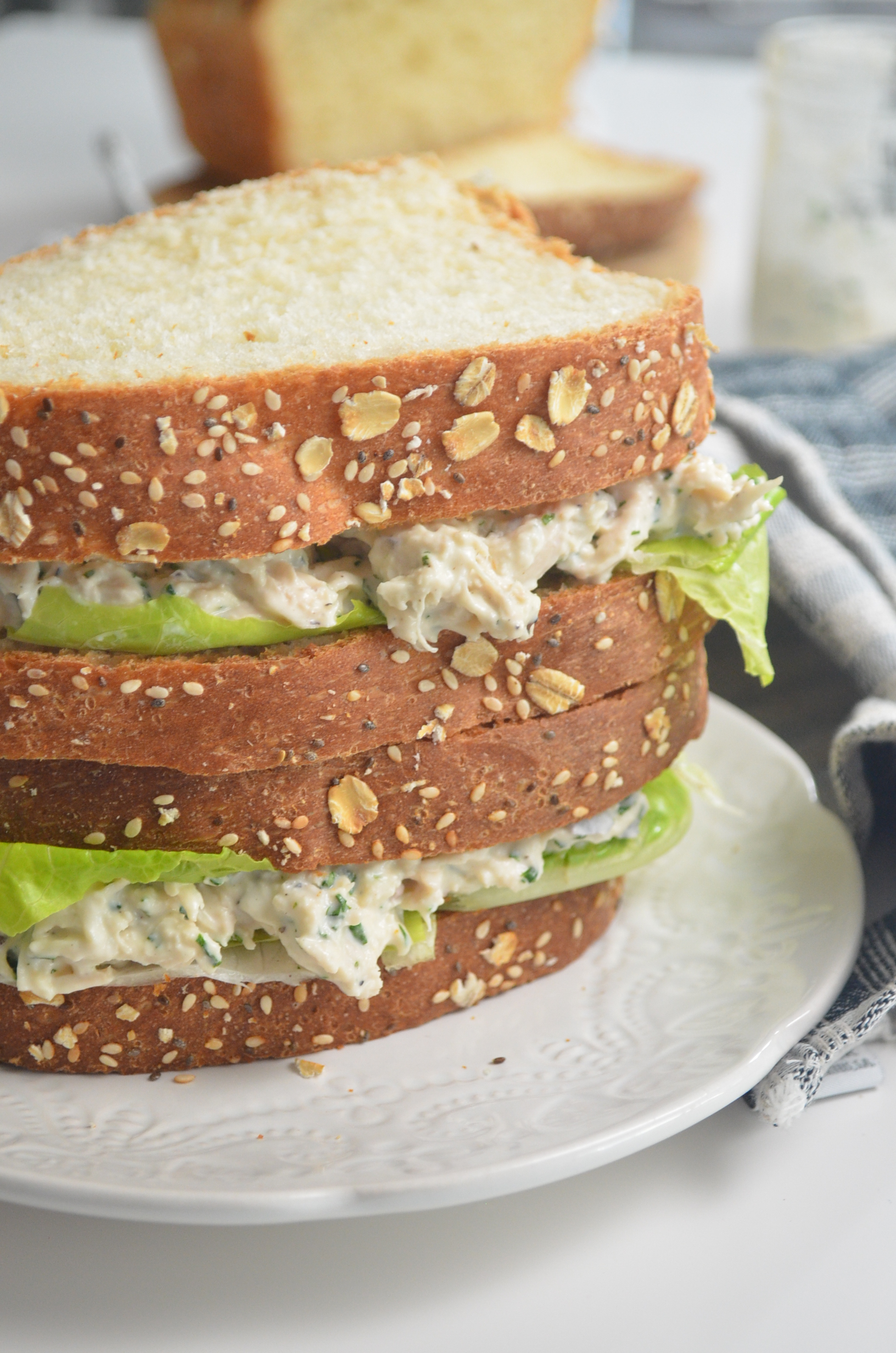
Tips for a Successful Soft Homemade Bread
- Liquid Temperature – Yeast grows in temperature between 110 – 115F, so its important to have the water that you are using to “proof” it in this range. If you go lower or higher, the yeast might not proof properly. That means the bread will not rise as much, resulting to a flat and tough bread.
- Check Yeast Expiry a Date – you might be wondering how come the bread did not rise when you followed exactly the recipe. Well, first thing first, make sure the yeast is not yet expired.
- Amount of Yeast – Just because you want a tall bread doesn’t mean you have to put as much yeast in the mixture. Sometimes if you add too much, it will have a tendency to collapse. Just imagine putting more air than what is needed in a balloon, the balloon will explode. The same case with bread.
- Right Type of Yeast – We’ve discussed the 3 types of yeast above. Make sure to use the right one for your recipe, and make necessary adjustments if you want to swap one from another.
- Rest Period – Yeast bread needs time to rise. There are bread that uses less yeast but requires more rest time, the likes of No Knead Bread or Artisan Bread which usually require 8- 16 hours rest period to get the volume and to develop the flavor. There are 1 hour bread like my Rosemary Dinner Rolls which used this same bread dough. The point is, give it time to rest, don’t touch it just leave it in a warm place. The first rest period will normally tell you if your dough is good or not. If it rise and almost double in size, then your on the right track.
These are the 5 common points that I remind myself when making homemade bread. Bear this in mind and you’ll sure to have a nice soft homemade bread.
Now that we have a background about Yeast and tips for, bread making, let’s check the recipe.
4 Methods To Make This Dough
There are 4 ways that you can choose from in how you make this bread. Choose whichever works for you.
- Stand Mixer – This is what I always use when I make this dough. It’s the fastest and easiest method and less manual handling. This is the step outlined below in the instruction.
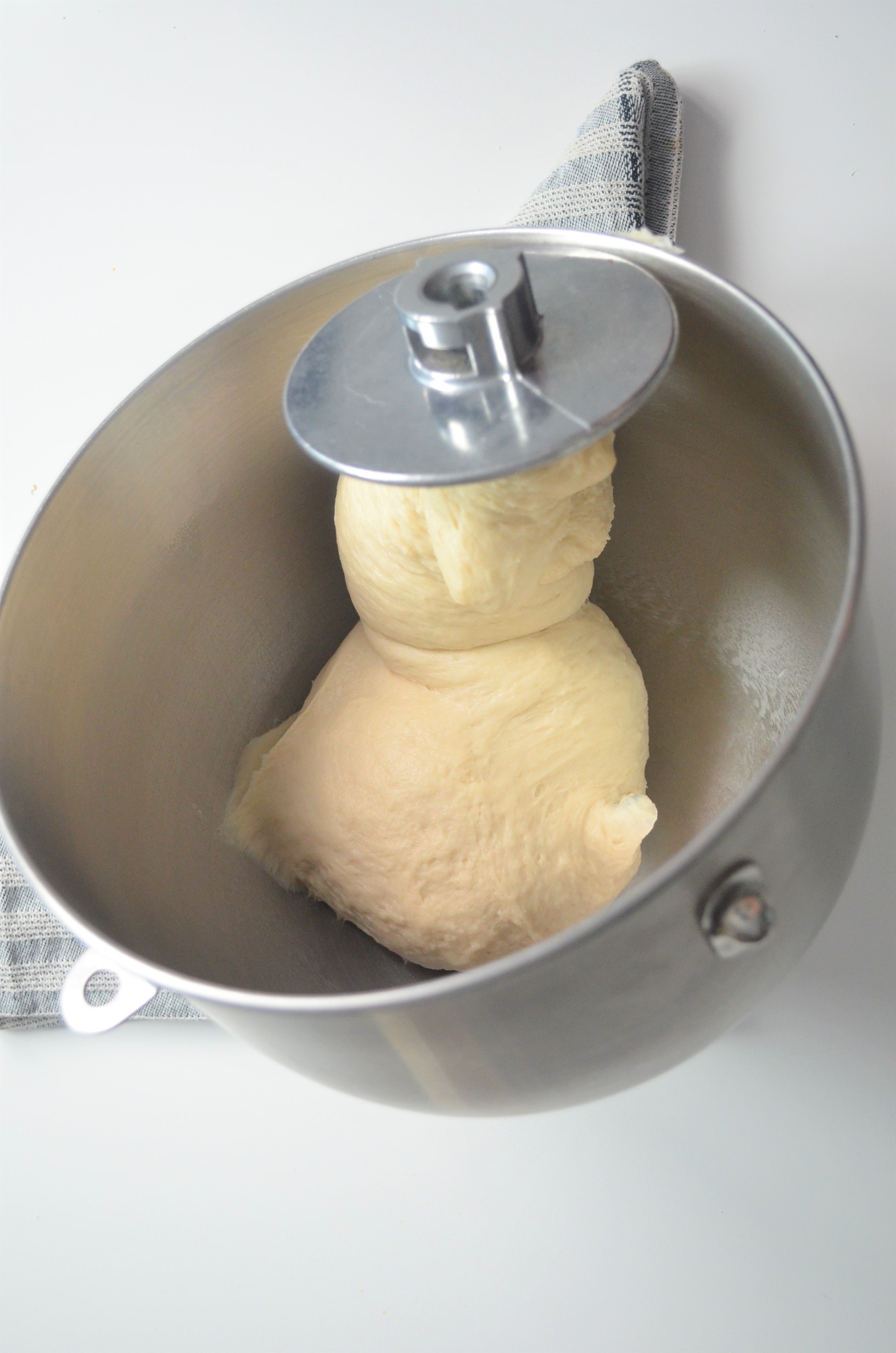
- Hand Mixer – It’s doable but I never used it because I don’t have a dough attachment. Important point to remember, use DOUGH attachment, a regular hook attachment will not work as it will be jammed with dough. Also, it’s going to be too heavy for the hook attachment to mix the dough.
- Manually – If you don’t have any electronic baking equipment for making the dough, you can do it manually. Simply follow the same instructions, do the mixing in a large bowl and transfer in counter top and knead manually. It will take a lot of arm exercise, but I’m telling you, it’s worth it.
- Bread Machine – If you happen to have one, use the dough setting. Add all the wet ingredients first, followed by all dry ingredients. Remove the dough after the 3rd rise and shape and fill then bake in the oven. Do not forget to remove the dough otherwise it will continue into the bake stage.
Ok, now let’s go and put all these pointers to work. Let’s make your first (or maybe not) homemade bread dough. At the end of the recipe, I’ll add links to recipes where I used this dough, or recipes where you could substitute this dough. Let’s get started
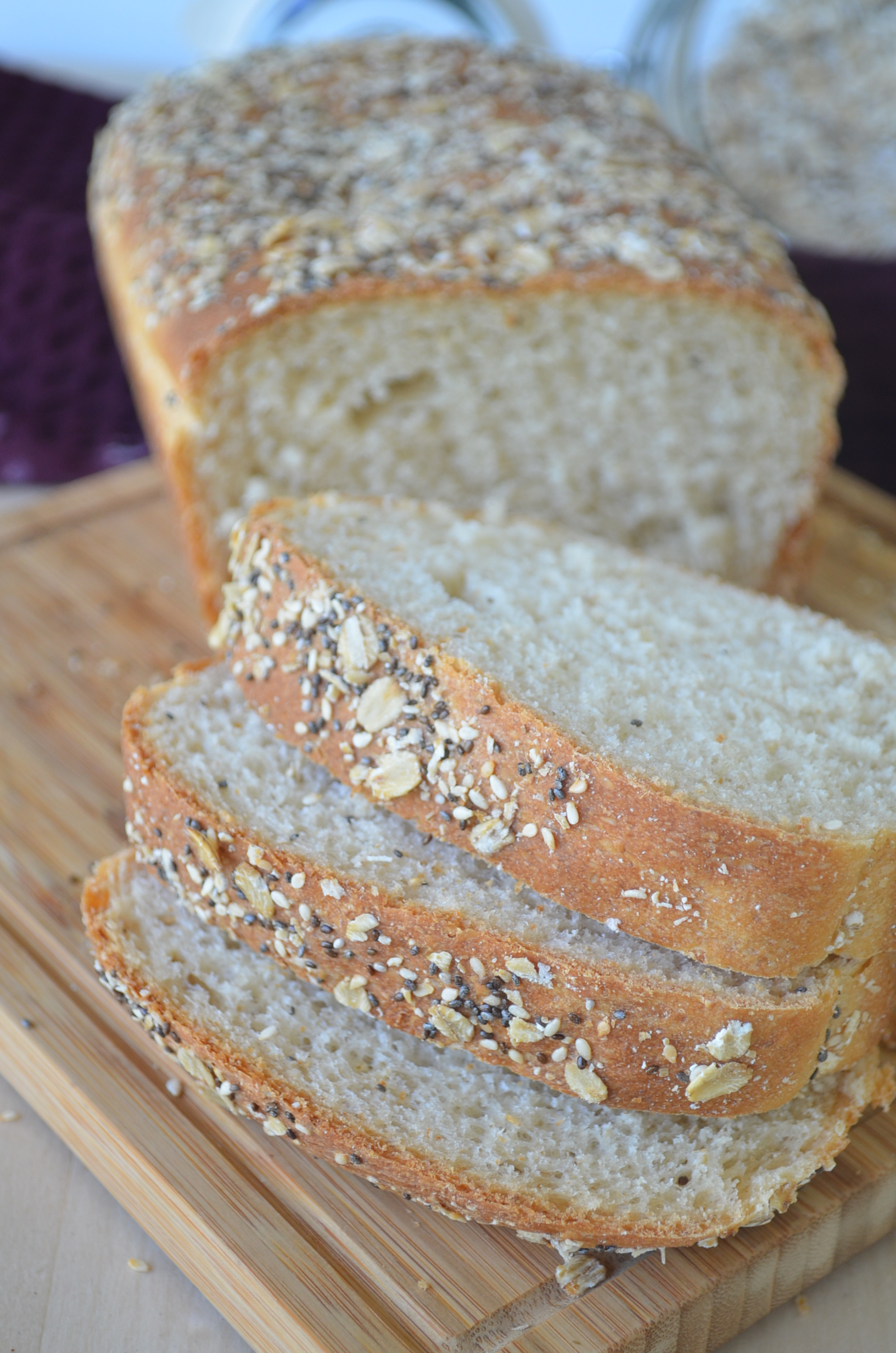
Ingredients
- 1/2 cup Warm Water (110F) – Microwave tap water for 20 seconds
- 1/4 cup Non-Dairy Milk or Dairy
- 1 1/4 teaspoon Active Dry Yeast
- 2 tablespoon Honey (or Maple Syrup for vegan option)
- 3 tablespoon Flavorless Oil
- 3/4 teaspoon Salt
- 2 cups Bread Flour (+ 1/4 cup on the side as needed)
Instructions:
- Activate Yeast: In the bowl of an electric stand mixer (Refer to discussion above for other Methods of making this) whisk together water, honey and yeast. Rest 10 minutes until mixture is foamy.
- Add Wet Ingredients: Set mixer with paddle attachment and add oil.
- Add Dry Ingredients: Add salt and 1 cup of flour and mix on low-speed until combined, then switch to a hook attachment. Set mixer on low-speed and slowly add in remaining 1 cup of flour. Allow mixture to knead on medium-low speed until smooth and elastic , about 8 minutes. Pay close attention to the texture of the dough. If the dough is too sticky add 1 tbsp of flour at a time until the dough starts to form, dough should be slightly sticky and not too dry. If too much flour is added the bread will be dense and heavy. A good measure of correct texture is a clean mixing bowl. Add 2 tbsp of the mixed seeds and continue mixing about 2 minutes.
- First Rest Period: Remove the dough and form into a ball. Transfer into a greased bowl and cover bowl with plastic wrap or warm towel and allow to rest for 1 hour.
- TIP: To help the dough rise better, leave it inside the oven pre-heated to 110F ONLY, turn it OFF once it reach 110F. Do NOT forget to stop/turn off the oven. Some oven has a proofing setting, mine doesn’t, so this is my trick.
- Shape and Prepare for 2nd Rest Period: Take the dough out from the bowl and lightly push the dough down with the heel of the palm of your hands. Knead then shape shape into a log about 6-inch long. Arrange in a 7-inch loaf pan lined with parchment paper.
- 2nd rest Period: Cover and let rest in a warm place for the second time for 1 hour.
- Preheat oven during last 15 minutes of dough rising. If you are using the oven to store the dough, do NOT forget to take it out before pre-heating the oven.
- Bake for 25 minutes or until the top has tuned golden brown.
- Check at 1 minutes, if the top is browning fast, cover the top with aluminum foil and continue baking
There you go! You now have a homemade Sugar Free & Vegan Loaf Bread.
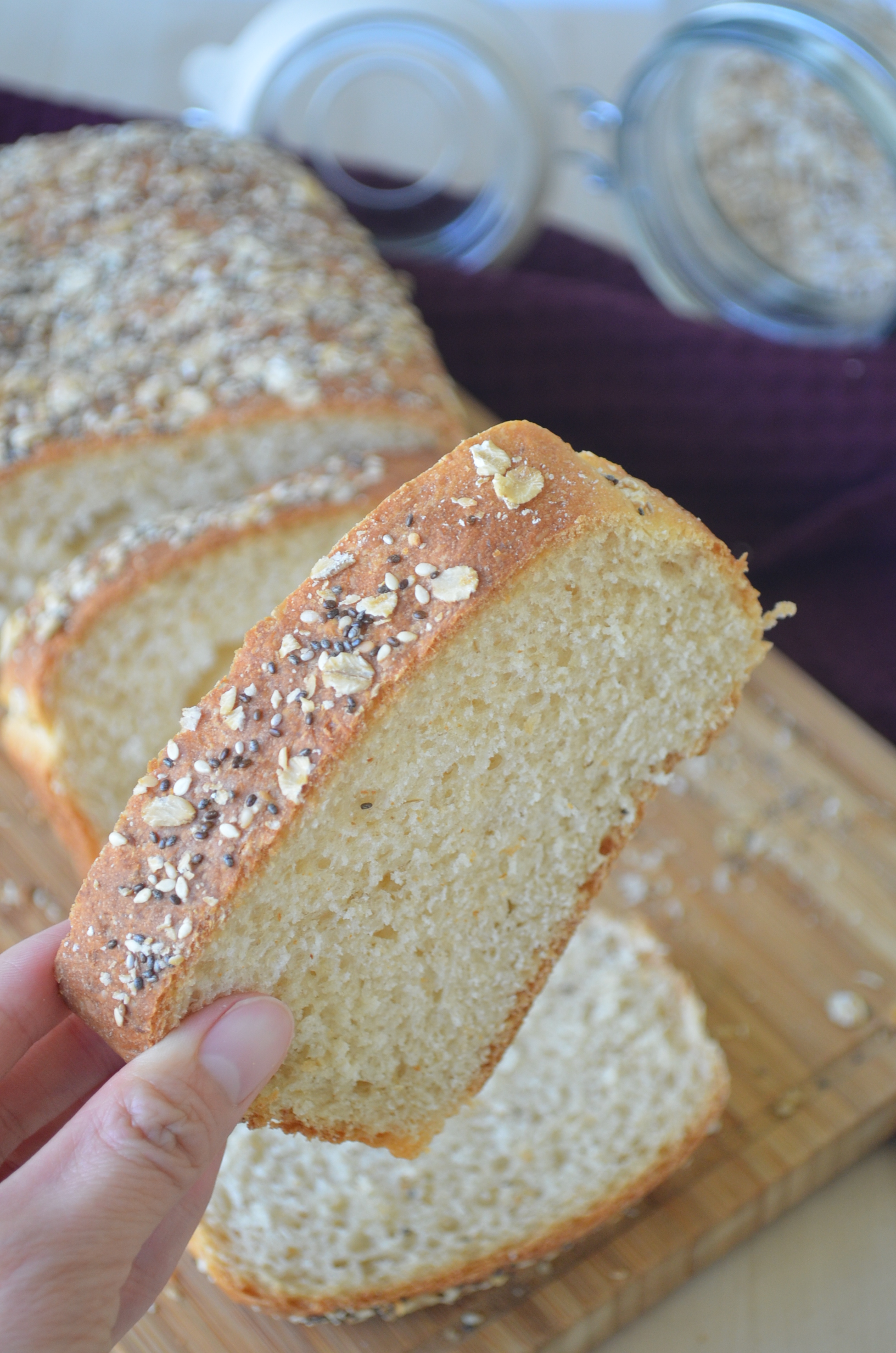
Featured Posts:
- 1 Hour Rosemary Dinner Rolls
- White Bread Loaf
- Purple Yam Pull Apart Bread
- Small Batch Dinner Rolls for Two (Makes 4)
- [VIDEO] All Around Bread Dough: Nutella Star Bread (Plus Bonus Twist Bread)
- [VIDEO] All Around Bread Dough: Italian Herbed Jalapeño & Cream Cheese Pull Apart
- Small Batch Hot Cross Buns
- Small Batch Apple Cinnamon Roll (Makes 4), BEST Ever!


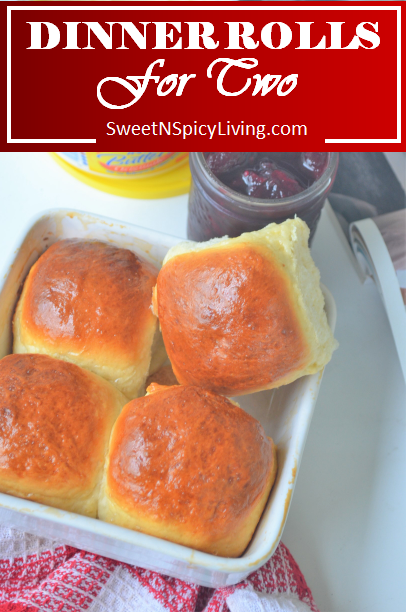
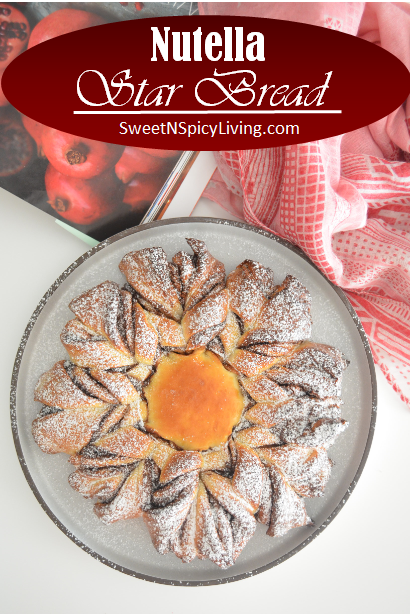
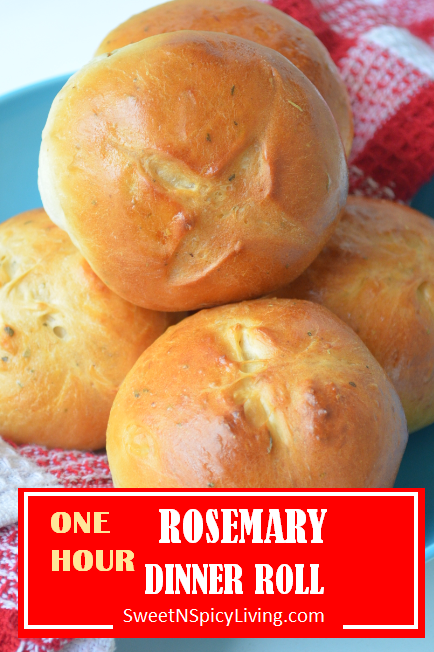

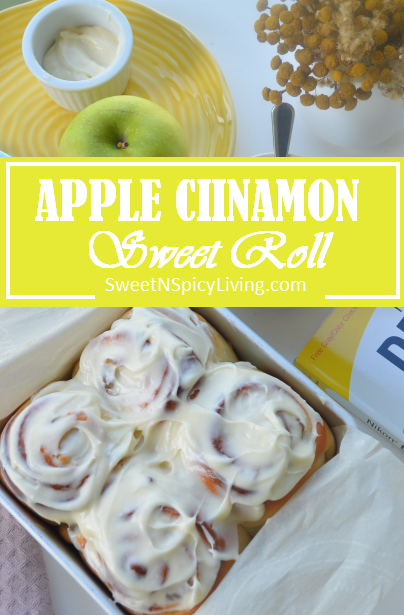

My Other Videos:
Thank You for visiting my website. Please don’t forget to click the “Like” button below if you like this recipe. Your feedback helps me decide what to put on my next baking to do list. Lastly, did you know that I have a YouTube Channel? Please support my channel by clicking on the “Subscribe” button in my video and the “Bell” icon to get notification of new videos.

FOLLOW SWEETNSPICLIVING ON SOCIAL MEDIA
Facebook | Instagram | Pinterest | Twitter | YouTube
Categories: Baking, Breads, Healthy Option, Recipe, Vegan, Video, Video Recipes
